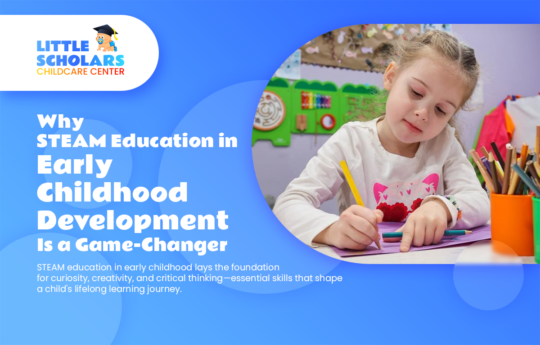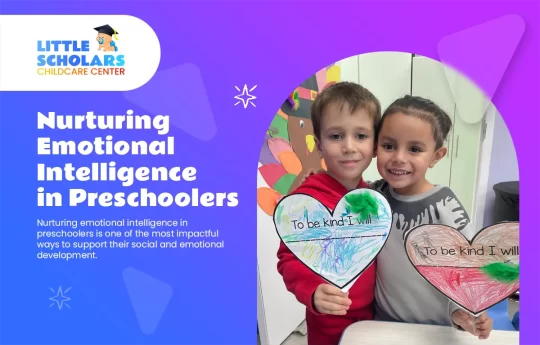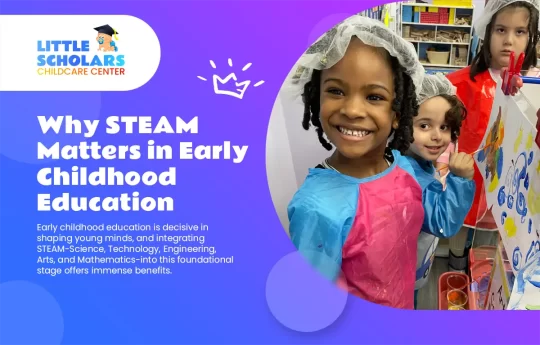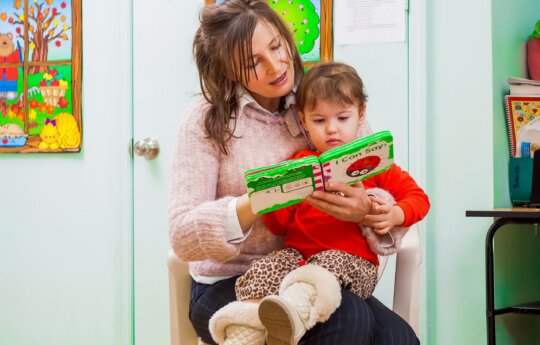
How can a bilingual child be raised? Teaching a single language is not always as easy as raising a bilingual child. It provides a strong educational foundation in a global setting in addition to enhancing a child’s cognitive and communicative abilities. What are the best ways to raise a bilingual child?

This article examines the advantages and approaches of bilingual early education learning. Join Little Scholars, a multilingual network of preschools in New York.
Read more about how emotional intelligence strengthens bilingual learning here.
Introduction: Why Bilingual Early Education Learning Matters
The capacity to converse efficiently and fluently in two or more languages at a level that is on par with native speakers is known as bilingualism. Being fluent in syntax, bilingual people are able to comprehend and use the language in a variety of contexts while demonstrating respect and a profound awareness of the cultures that are connected to those languages.
The Benefits of Bilingual Learning in Early Childhood
Early exposure to bilingual language learning has a huge positive impact on children’s overall development. It also helps teaching empathy and communication across languages Here are a few noteworthy benefits:
Global Communication Skills
Early bilingual learning helps children build strong communication foundations that transcend borders. This:
- Encourages the ability to interact confidently with people from different countries and cultures.
- Develops adaptability in diverse social and learning environments.
- Fosters collaboration and open-mindedness when working with international peers.
This gives students the chance to interact and work together with friends and partners from many nations and cultures.
Deep Understanding of Cultural Diversity
Children who speak multiple languages are typically more conscious of cultural differences. See how it:
- Enhances appreciation for different traditions, values, and perspectives.
- Builds empathy and respect for others’ ways of life.
- Prepares children for future success in global educational and professional settings.
They will be better prepared to succeed in an international learning and working environment in the future if they have an understanding of the diversity of languages and cultures.
Strong Learning Abilities
Children who learn several languages early on will find it simpler to pick up additional ones later on. It:
- Improves memory, attention, and problem-solving capabilities.
- Makes it easier to learn additional languages later in life.
- Strengthens comprehension and retention across all subject
Their first language’s linguistic proficiency and cultural awareness also aid in their ability to more fully assimilate new information.
Classroom Practices and Family Engagement
Early second language instruction enables kids to organically incorporate the language into their growing up. They will learn about the settings and sounds of many languages, which will help them comprehend that meaning may be expressed in a variety of ways.
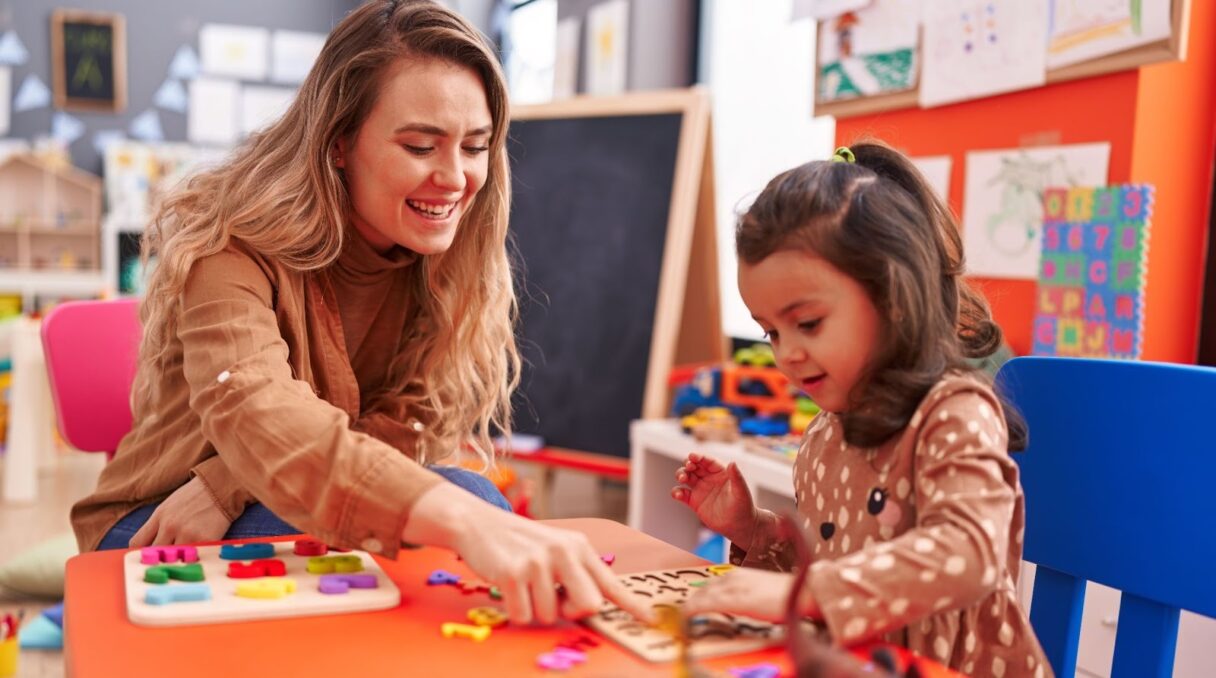
Learn how Little Scholars supports language development and cultural inclusion here.
| Domain | Description | Practical Example |
| Classroom Practices and Family Engagement | They learn to recognize diverse sounds and meanings, understanding that ideas can be expressed in many ways | Teachers use multilingual songs, storytelling, and interactive play to build comprehension and curiosity. |
| One Parent, One Language Approach | Parents speak their native languages consistently with the child, helping them absorb both languages naturally. | Each parent maintains communication in their own language during daily routines and play. |
| Enrol Your Child in a Bilingual School | Schools like Little Scholars provide structured bilingual instruction, allowing children to grow fluent in both languages. | Students learn from native-speaking educators in immersive environments. |
One Parent, One Language Approach
Through bilingual education resources for kids, bonding, and frequent exposure, this aids in the child’s natural language acquisition. In order to help the child progressively become accustomed to this approach, both parents should engage with the youngster in their native tongues. While spending time with their child, they should continue to utilize both languages in a balanced manner.
Expert Insights from Little Scholars Educators
Our language-rich learning experiences in preschool classrooms bring a wealth of knowledge, compassion, and dedication to every classroom. They understand that each child’s development is unique and that learning extends beyond academics to include emotional and social growth.
Through intentional teaching, consistent encouragement, and strong partnerships with families, our educators create meaningful learning experiences that nurture curiosity, confidence, and a lifelong love of learning.
Professional Training and Experience in Early Childhood Bilingualism
The educators at Little Scholars are highly trained in early childhood bilingual education, equipping them to support children’s language development in both English and their home language. They use bilingual learning toys for toddlers to promote communication, literacy, and cultural understanding, helping children become confident, expressive bilingual learners.
An approach for different speech and communication milestones not only strengthens cognitive skills but also celebrates each child’s cultural identity, fostering pride and inclusivity in every classroom.
Safe and Supportive Learning Environments
Creating a safe, welcoming, and nurturing space is at the heart of the Little Scholars philosophy. Classrooms are thoughtfully designed to encourage exploration, independence, and collaboration while ensuring that every child feels valued and secure. Teachers build trusting relationships and model empathy, respect, and positive communication, setting the tone for a kind and caring community. The environment for cognitive growth through multilingual exposure allows children to take risks, express themselves freely, and grow both emotionally and academically.
Conclusion: Building a Foundation for Bilingual Learning
At Little Scholars, our bilingual learning approach emphasizes the acquisition of Spanish and English via hands-on activities, allowing kids to participate fully and successfully in their education. Children are exposed to a variety of cultures through a community of pupils from different countries and a staff of multicultural teachers.
We hope that this information will help parents raise a multilingual child more effectively. Get in touch with Little Scholars right now if you require any additional information or guidance.
FAQ
How does being bilingual affect learning?
Being in the bilingual kids learning program promotes general academic development while improving communication, problem-solving, and cognitive flexibility.
Get your storytelling and reading tips to boost bilingual vocabulary here.
How to raise bilingual kids?
Expose multilingual children to both languages on a regular basis through books, songs, everyday conversations, and real-world situations.
What percentage of kids are bilingual?
Around 50% of children worldwide acquire bilingualism, while the percentage varies by nation and locality.
When do bilingual kids start talking?
Although they may first mix words from both languages, bilingual children usually begin speaking at the same age as monolingual children.
How to teach kids to be bilingual?
By providing frequent opportunities for children to hear, talk, and engage in bilingual learning toys and both languages in a natural and consistent way, you may help them become multilingual.
How to teach bilingual kids?
Use visual aids, repetition, and cultural links while teaching bilingual children to improve their comprehension and fluency in both languages.

